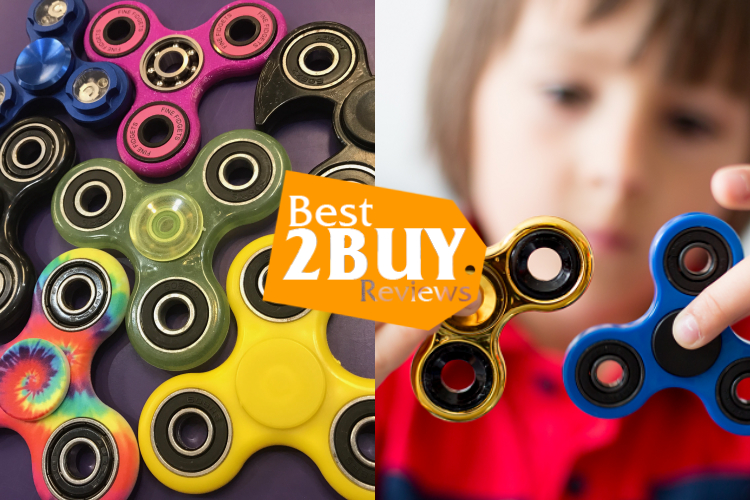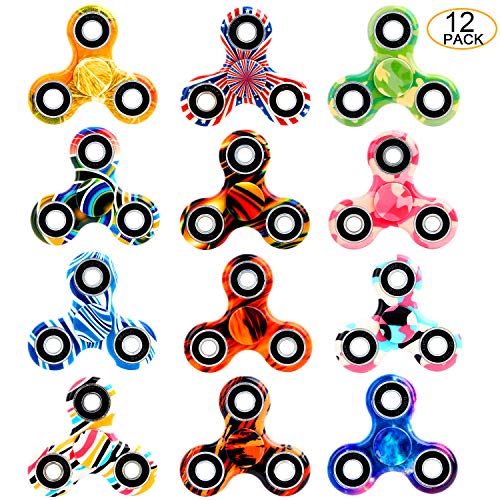Fidget Spinners: Everything You Need To Know

- 1. Fidget Spinners: Everything You Need To Know
- 1.1. What Are Fidget Spinners?
- 1.2. Who Invented The Fidget Spinner?
- 1.3. The History Of the Fidget Spinner
- 1.4. Why Are They So Popular?
- 1.5. Where Can I Buy A Fidget Spinner?
- 1.6. Why Are They Getting Banned In Schools?
- 1.7. The Oversaturation Problem
- 1.8. Short-Lived Trend
- 1.9. Critical Reception and Controversies
- 1.10. Conclusion
In 2017, it was impossible to stroll down the street or enter a classroom without encountering someone spinning a fidget spinner in their hands. These petite gadgets swiftly transitioned from relative obscurity to becoming one of the most sought-after fidget toys in the market. The fidget spinner garnered attention as a subject of breaking news stories and secured the impressive second spot on Time Inc's Top 10 Toys of 2017 list.
What Are Fidget Spinners?
Fidget spinners are small, handheld devices with a ball bearing in the center that allows them to spin. They gained popularity as a toy and stress-relief tool in the early 2010s. The basic design typically consists of a central core with two or more lobes that house the bearing. Users can hold the center and spin the lobes, creating a satisfying spinning motion.
Fidget spinners were initially marketed as aids for individuals with attention disorders, anxiety, or stress, claiming to help improve focus and relieve nervous energy. However, the scientific evidence supporting these claims is limited.
The fidget spinner trend became widespread around 2017, especially among children and teenagers. Many different designs and variations were produced, ranging from simple plastic models to more intricate and high-quality metal versions. While they enjoyed a period of widespread popularity, interest in fidget spinners has since declined, and they are now considered more of a passing fad.
Who Invented The Fidget Spinner?
There is ongoing discussion regarding the origin of the fidget spinner. Although the initial patent for a spinning toy was filed in 1997, it was Scott McCoskery who introduced a spinning object closely resembling the well-known fidget spinner in 2015.
Throughout the past century, various objects similar to the modernized fidget spinner have been documented. The earliest American patent for a spinning toy was secured by Catherine Hettinger. She maintained the patent for eight years but relinquished it in 2005 due to an inability to cover the necessary fees.
McCoskery subsequently pioneered the development of a spinning device known as the Torqbar. The Torqbar, a two-pronged device connected via a central ball bearing, is notably of superior quality compared to typical fidget spinners, accompanied by a significantly higher price tag. While a fidget spinner can be easily found on Amazon for a few dollars, Torqbars start at $139 each.
Within a year of launching his product, imitations of the Torqbar emerged, taking the form of the fidget spinner widely recognized today.
The History Of the Fidget Spinner
In 1997, Catherine Hettinger submitted the initial patent for the spinning toy, which, however, had a duration of only eight years. Scott McCoskery introduced the Torqbar in 2015 and attempted to secure a patent, but his efforts proved unsuccessful. Subsequently, imitation Torqbars resembling the contemporary fidget spinners started appearing widely. Fidget spinners gained widespread popularity in the spring of 2017, emerging as the second most popular toy of that year.
Why Are They So Popular?
The exact reason behind the widespread popularity of fidget spinners remains unknown, even to the inventor of the product. (Hettinger suggests that perhaps, in the aftermath of the 2008 recession, Americans are seeking ways to unwind and enjoy themselves.) These items are promoted as beneficial for individuals dealing with ADHD, ADD, anxiety, and stress.
Google searches for these spinners surged in April, leading to various versions of the toy dominating every spot in Amazon's top 20 best sellers list for toys, with most of the top 50 spots also occupied. The high demand for fidget spinners has resulted in widespread shortages at stores across the country. In educational settings, children are reportedly exchanging and using these spinners in classrooms.
Where Can I Buy A Fidget Spinner?
Fidget spinners are available for purchase through online platforms or various retail outlets. Amazon offers a diverse range of these products online, with over 18,500 results appearing when searching for "fidget spinner." Additionally, they are stocked at brick-and-mortar stores such as Walmart and 7-Eleven, as well as specialized online retailers like GoSpinner and Addictive Fidget Toys.
The majority of fidget spinners can be easily found online at an average price of around $4. While some devices may be available for free, there are also premium options that can be priced as high as $1,000.
Why Are They Getting Banned In Schools?
The gadgets were designed and promoted as a soothing aid for maintaining concentration, but this may not hold true for certain students. Educators nationwide are prohibiting the use of fidget spinners in their classrooms, deeming them excessively distracting for students.
According to a blog post by Working Mother, principals in at least 11 states have implemented bans on these devices within schools. Despite their intended single-handed use, it seems that some students are employing both hands, leading to challenges in writing or concentrating on their academic tasks.
The Oversaturation Problem
One of the key factors contributing to the downfall of fidget spinners was their oversaturation in the market. As demand skyrocketed, manufacturers flooded the market with countless variations of the toy. The oversupply led to a loss of novelty and intrigue, making fidget spinners less appealing to consumers.
Short-Lived Trend
Fidget spinners quickly became synonymous with fleeting trends. Their popularity was fueled by social media challenges, viral videos, and celebrity endorsements. However, once the initial hype died down, so did the demand for these once highly sought-after gadgets.
Critical Reception and Controversies
The reception of fidget spinners was mixed. While some praised them for providing a tangible solution to stress and anxiety, others criticized them as nothing more than a passing fad. Additionally, concerns were raised about the potential dangers of low-quality spinners, which led to safety recalls and further tarnished the image of these toys.
Conclusion
The fidget spinner trend, a cultural sensation that briefly captivated the globe, has left an enduring imprint on popular culture. Originating as a therapeutic device, its swift ascent and subsequent decline stand as a testament to the cyclical patterns inherent in trends. Despite the passing of the fad, its legacy persists, symbolizing the capricious and transitory essence of consumer preferences.











